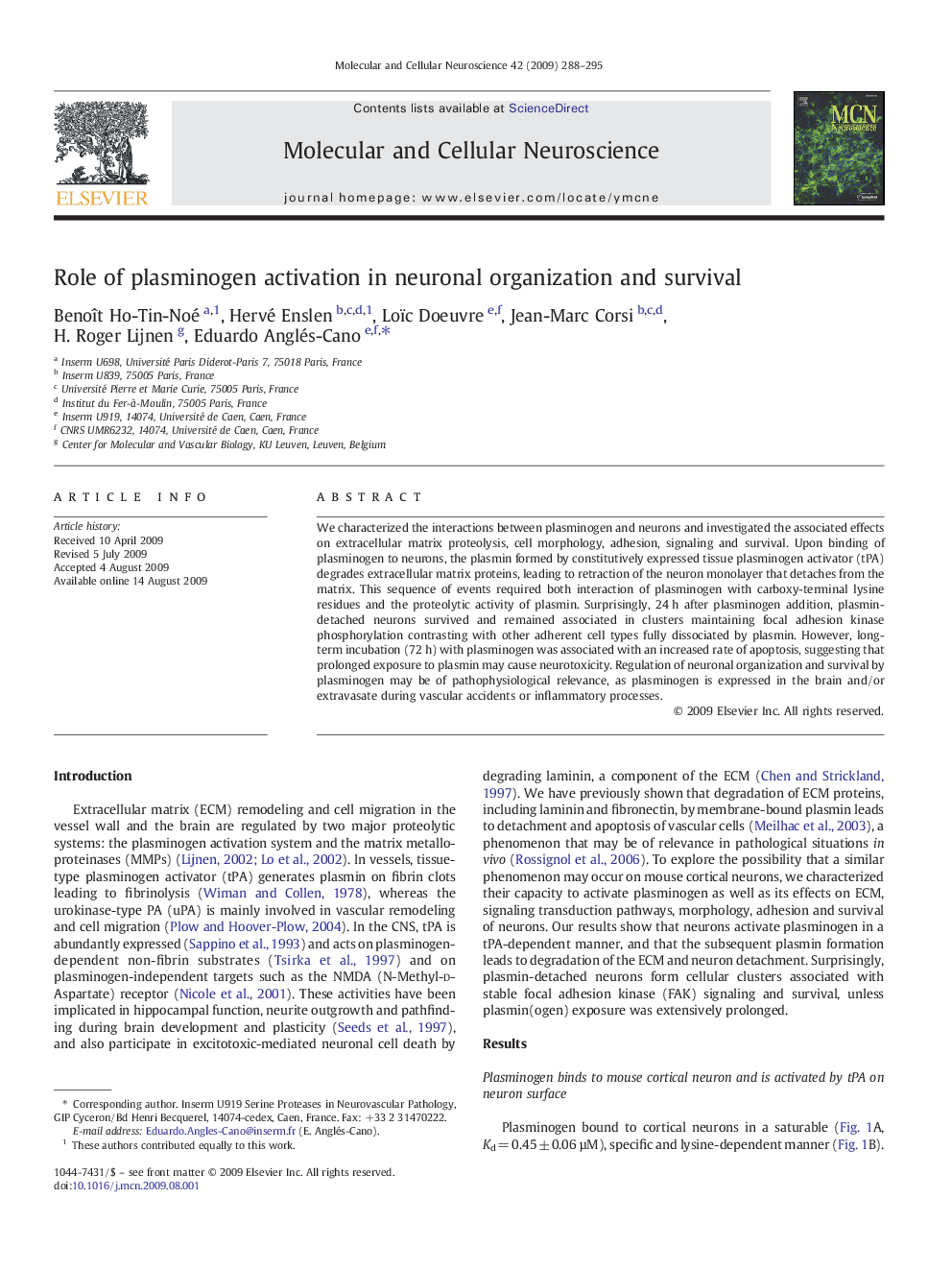| Article ID | Journal | Published Year | Pages | File Type |
|---|---|---|---|---|
| 2198848 | Molecular and Cellular Neuroscience | 2009 | 8 Pages |
We characterized the interactions between plasminogen and neurons and investigated the associated effects on extracellular matrix proteolysis, cell morphology, adhesion, signaling and survival. Upon binding of plasminogen to neurons, the plasmin formed by constitutively expressed tissue plasminogen activator (tPA) degrades extracellular matrix proteins, leading to retraction of the neuron monolayer that detaches from the matrix. This sequence of events required both interaction of plasminogen with carboxy-terminal lysine residues and the proteolytic activity of plasmin. Surprisingly, 24 h after plasminogen addition, plasmin-detached neurons survived and remained associated in clusters maintaining focal adhesion kinase phosphorylation contrasting with other adherent cell types fully dissociated by plasmin. However, long-term incubation (72 h) with plasminogen was associated with an increased rate of apoptosis, suggesting that prolonged exposure to plasmin may cause neurotoxicity. Regulation of neuronal organization and survival by plasminogen may be of pathophysiological relevance, as plasminogen is expressed in the brain and/or extravasate during vascular accidents or inflammatory processes.
